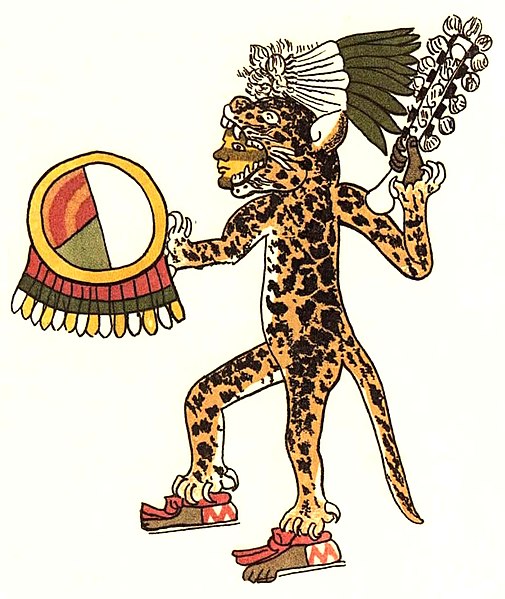For centuries, the fate of the original Otomí inhabitants of Xaltocan, the capital of a pre-Aztec Mexican city-state, has remained unknown. Researchers have long wondered whether they assimilated with the Aztecs or abandoned the town altogether.

Photo provided by Lisa Overholtzer, Wichita State University.
According to new anthropological research from The University of Texas at Austin, Wichita State University and Washington State University, the answers may lie in DNA. Following this line of evidence, the researchers theorize that some original Otomies, possibly elite rulers, may have fled the town. Their exodus may have led to the reorganization of the original residents within Xaltocan, or to the influx of new residents, who may have intermarried with the Otomí population.Using ancient DNA (aDNA) sampling, Jaime Mata-Míguez, an anthropology graduate student and lead author of the study, tracked the biological comings and goings of the Otomí people following the incorporation of Xaltocan into the Aztec empire. The study, published in
American Journal of Physical Anthropology, is the first to provide genetic evidence for the anthropological cold case.
Aztec Mask

Learning more about changes in the size, composition, and structure of past populations helps anthropologists understand the impact of historical events, including imperial conquest, colonization, and migration, Mata-Míguez says. The case of Xaltocan is extremely valuable because it provides insight into the effects of Aztec imperialism on Mesoamerican populations.
Historical documents suggest that residents fled Xaltocan in 1395 AD, and that the Aztec ruler sent taxpayers to resettle the site in 1435 AD. Yet archaeological evidence indicates some degree of population stability across the imperial transition, deepening the mystery. Recently unearthed human remains from before and after the Aztec conquest at Xaltocan provide the rare opportunity to examine this genetic transition.
Photo provided by Lisa Overholtzer, Wichita State University.
As part of the study, Mata-Míguez and his colleagues sampled mitochondrial aDNA from 25 bodies recovered from patios outside excavated houses in Xaltocan. They found that the pre-conquest maternal aDNA did not match those of the post-conquest era. These results are consistent with the idea that the Aztec conquest of Xaltocan had a significant genetic impact on the town.Mata-Míguez suggests that long-distance trade, population movement and the reorganization of many conquered populations caused by Aztec imperialism could have caused similar genetic shifts in other regions of Mexico as well.
In focusing on mitochondrial DNA, this study only traced the history of maternal genetic lines at Xaltocan. Future aDNA analyses will be needed to clarify the extent and underlying causes of the genetic shift, but this study suggests that Aztec imperialism may have significantly altered at least some Xaltocan households.
Aztec cosmogram in the pre-Hispanic Codex Fejérváry-Mayer – the fire god Xiuhtecuhtli is in the center.

Credit: Wikipedia
The Aztec people were certain ethnic groups of central Mexico, particularly those groups who spoke the Nahuatl language and who dominated large parts of Mesoamerica from the 14th to 16th centuries. The Nahuatl words aztecatl (singular) and aztecah (plural) mean “people from Aztlan”, a mythological place for the Nahuatl-speaking culture of the time, and later adopted as the word to define the Mexica people. Often the term “Aztec” refers exclusively to the Mexica people of Tenochtitlan (now the location of Mexico City), situated on an island in Lake Texcoco, who referred to themselves as Mexica Tenochca or Cōlhuah Mexica.
Ceramic sculpture of an Aztec eagle warrior
Credit: WikipediaSometimes the term also includes the inhabitants of Tenochtitlan’s two principal allied city-states, the Acolhuas of Texcoco and the Tepanecs of Tlacopan, who together with the Mexica formed the Aztec Triple Alliance which controlled what is often known as “the Aztec Empire”. In other contexts, Aztec may refer to all the various city states and their peoples, who shared large parts of their ethnic history and cultural traits with the Mexica, Acolhua and Tepanecs, and who often also used the Nahuatl language as a lingua franca. In this meaning it is possible to talk about an Aztec civilization including all the particular cultural patterns common for most of the peoples inhabiting Central Mexico in the late postclassic period.
Jaguar warrior, from the Codex Magliabechiano.
Credit: WikipediaFrom the 13th century, the Valley of Mexico was the heart of Aztec civilization: here the capital of the Aztec Triple Alliance, the city of Tenochtitlan, was built upon raised islets in Lake Texcoco. The Triple Alliance formed a tributary empire expanding its political hegemony far beyond the Valley of Mexico, conquering other city states throughout Mesoamerica. At its pinnacle, Aztec culture had rich and complex mythological and religious traditions, as well as reaching remarkable architectural and artistic accomplishments. In 1521 Hernán Cortés, along with a large number of Nahuatl speaking indigenous allies, conquered Tenochtitlan and defeated the Aztec Triple Alliance under the leadership of Hueyi Tlatoani Moctezuma II. Subsequently the Spanish founded the new settlement of Mexico City on the site of the ruined Aztec capital, from where they proceeded with the process of colonizing Central America.
The Aztec goddess of Coatlicue, mother of earth.
Credit: National Museum of Anthropology.
Aztec culture and history is primarily known through archaeological evidence found in excavations such as that of the renowned Templo Mayor in Mexico City; from indigenous bark paper codices; from eyewitness accounts by Spanish conquistadors such as Hernán Cortés and Bernal Díaz del Castillo; and especially from 16th and 17th century descriptions of Aztec culture and history written by Spanish clergymen and literate Aztecs in the Spanish or Nahuatl language, such as the famous Florentine Codex compiled by the Franciscan monk Bernardino de Sahagún with the help of indigenous Aztec informants.









